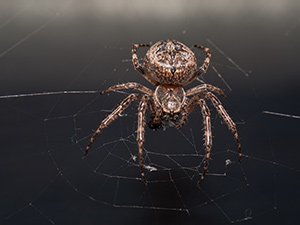Spider Control and Extermination in NJ
Action Termite and Pest Control is pleased to offer customers peace of mind, as Guardians of Your Environment. Spider Control is a major issue for New Jersey Residential and Commercial customers.
The poisonous nature of the spider bite is one of the major reasons to fear a spider infestation. Second only to snakes in their ability to be loathed by humans, most spider bites appear on the hands, arms or feet.
Spiders have two body regions connected by a restricted waist or pedicel. Spiders have eight legs and eight or fewer eyes.
Spiders are predators and require prey to survive. Spiders frequently stray into dwellings or other indoor habitats, or may be accidentally introduced on firewood, laundry hung out to dray and on flowers.
Spiders can be very difficult to eliminate from your home or business because of the many hiding places they are attracted to . . . Many do-it-yourself sprays to rid your property of spiders simply do not work as well as the chemicals a pest control company like Action Termite and Pest Control has access to and how we professionally treat for them. Over the counter products if misused or mixed improperly can be very dangerous to people, pets and/or plants.
Contact Action Termite and Pest Control Today for more information on how Spider Control can be easy and done right for you. Action offers a wide variety of home service plans that can meet your pest control needs.
Click Here to Learn More About Action’s Home Service Program.
 Q: What is a House Spider?
Q: What is a House Spider?
A: The common house spider gets its name from the fact that it is usually the spider most often encountered indoors. It is a nuisance pest, probably more because of its webs than the spider itself. The house spider is found worldwide and is common throughout the United States and Canada.
Female house spiders lay about 250 eggs in a silken sac that is brownish in color and round in shape. There may be more than one sac in the web at a time. A female house spider may produce up to 17 sacs, containing a total of more than 3,760 eggs, in her lifetime. The eggs hatch in about 7-10 days. Adults may live for a year or more.
 Q: What are Brown Recluse Spiders?
Q: What are Brown Recluse Spiders?
A: Often identified by a dark brown violin shape on its back, the brown recluse spider is predominantly found in the Midwest and Southeast of the United States. This species is well known for its “secretive” behaviors, as it prefers to take residence in warm, dry and dark environments, such as woodpiles, basements and closets. This arachnid bites, usually unintentionally when it feels trapped, typically when a hand or foot reaches into a shoe or piece of clothing or a box in the attic or basement where a brown recluse has made its home. Because their bites can take three or more hours to develop and about three weeks to heal, it is important to keep an eye on the individual which was bitten. The brown recluse venom can cause severe allergic reactions, notably in children, the elderly or those with preexisting medical conditions.
The brown recluse or fiddleback/violin spider gets its common names from its coloration and reclusive habits, or the dark violin/fiddle-shaped marking on the top of its chest. Brown recluse spiders are found in southern Europe, temperate Africa, and in North, Central, and South America. In the United States, brown recluse spiders are found predominantly in the Midwest and Southeast. Of the 11 recognized species, six are of public health importance.
 Q: What are Wolf Spiders?
Q: What are Wolf Spiders?
A: Unlike most spiders, wolf spiders don’t hunt with webs. Instead, they chase their prey using their fast running ability. These spiders are often big and hairy which alarms some people, but they are primarily nuisance pests. Over 100 species of wolf spiders are found in the United States and Canada.
Habits
Wolf spiders actively hunt during the night and usually rest in sheltered places during the day. They are fast on their feet and pursue prey. Because of these habits, wolf spiders are commonly seen by people.
Habitat
Wolf spiders may enter structures in search of prey. Although they are not inclined to be permanent residents in structures, they often stay once inside. Indoors, wolf spiders tend to remain at or near floor level, especially along walls and under furniture. Outside, wolf spiders can be found under stones, landscape timbers, firewood, leaves and other debris.
Threats
Because wolf spiders feed on a variety of insects, including crop pests, they can be beneficial. Wolf spiders can bite, but it’s extremely rare to experience a wolf spider bite unprovoked. They will only bite if they are handled. The presence of wolf spiders in homes is usually accidental.
Call a professional today – 1-800-920-0906.


